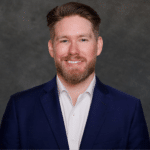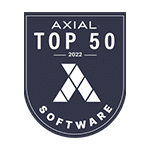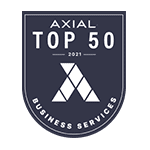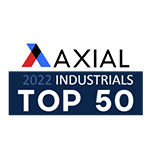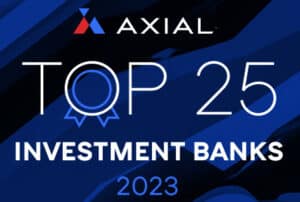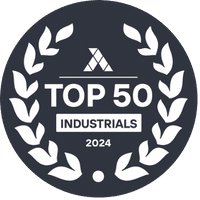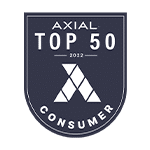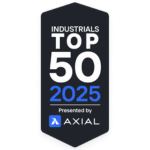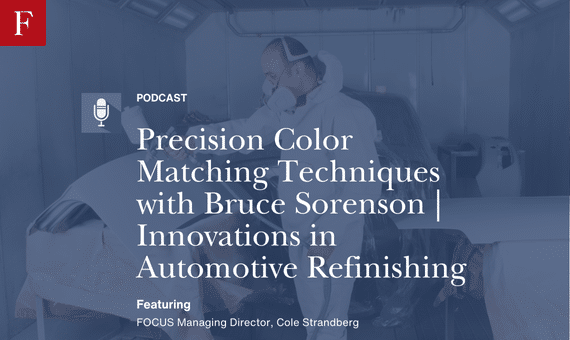
You really have to be obsessed in this field. The passion, the commitment all plays a role of doing high end finishes. So you know, it can be kind of a sickness, but it’s just something you have to have. You have to be obsessed.
Cole Strandberg: Today, we’re continuing our Beyond the Surface Innovations in automotive refinishing series with a focus on what it takes to refinish high end vehicles. Joining us today is Bruce Sorensen Junior, a master paint technician at #1 collision with years of experience working on luxury vehicles. Bruce is also an expert and we am certified finish tackling the unique challenges and precision required with high end vehicles, advanced technology and the high standards expected in this segment of the industry. We’re going to dive into all of that, the talent, the tools and the certifications that set high end refinishing apart. This is a fantastic conversation and I hope you enjoy the show. This episode is brought to you by Thrive. Ready to hit the gas on growth? Meet Thrive, the do it all small business software that can save you over 20 hours a week, attract customers, manage day-to-day tasks and keep communication simple with one powerful tool made for your auto business. Rev up your revenue today and let Thrive save you time so you can get back to doing what you love. Visit thrive.com. That’s thryv.com to schedule a demo today. Bruce, welcome to the Collision Vision.
Bruce Sorenson: Thank you. This is a big opportunity. I’m excited. I’m excited to, you know, be kind of a face to my fellow people in the in the field. I can’t say enough. This is great.
Cole Strandberg: Let’s do it, man. I want to. I want to dive right in. Before I do though, I, I mentioned in our pre show call, just getting off watching some of your, your social media content you put out there. It’s fantastic. I want to make sure to get your, your, your information for that so I can go ahead and tag that in the show notes at the end of the show. But fantastic stuff and really looking forward to a great conversation. Tell us about yourself, man, What do you do? What’s your background? What are you doing now?
Bruce Sorenson: So background, you know, I started in the field at 15 years old, quite young, but my first car started right in on it. You know, went from there to some on the on the job training, got into a collision repair facility, just kept my, kept my talents going and kept going from there. I’ve been in the field for now probably 2020, 627 years. You know, my family has supported me the whole way. I’ve got a, a wonderful wife, five kids and five grandkids. Actually most people think that’s quite amazing. So yeah, it’s it’s been a great road and had a lot of support along the way.
Cole Strandberg: That’s awesome man. And I love your specialty right now working with number one collision group. You’ve built your career from my perspective working on these high end highline vehicles. What is it from your perspective about this segment of the industry that requires such a high level of of talent? I’ll say it if you won’t. And skill.
Bruce Sorenson: You know, the industry alone these days is really pushing the envelope for skill talent training. So when you get that industry pushing, you know it it organically feeds the fire and fuels that for advancement in text. You know, you take the advanced vehicles these days, you know, the textures, the colors, you know everything about the, the lines of these cars, you know, vehicles, trucks, everything. You know, they’re just asking for talent. And you know, you get the the textures, the flat clears, the the grain portions, everything about it is just fueling that fire for talent and skill.
Cole Strandberg: You touch on a great point. Every repair right now requires a high degree of talent and skill and training and equipment. It’s part of what’s exciting about the industry today. It’s also part of what makes it challenging. I want to talk a little bit about some of these Highline premium brands that you work with. What are some of the unique challenges that working on those vehicles bring that working on kind of a standard DRP fix anything type of model might not present?
Bruce Sorenson: You know that that’s always a tough one because we really try to keep standard and premium the same no matter what. In your process, if you decipher between one car or another, are you really achieving the goals and the refinish level that you want? In in my company are not my company, the company that I work for, our employers have invested a lot of money and time and investment of, of training of they expect us to treat every vehicle and customer the same. No matter if you’re in a high level of vehicle or you know, a lower level vehicle, it just has to be presented the same. The quality has to be presented the same and the pride has to be presented the same.
Cole Strandberg: Love that mentality, love that perspective and I want to get into the training piece here in a little bit. But before we move on from you and your story and your perspective of the industry, when did you know that this was the career path for you? At what point were you, were you the kid that was growing up and, and, and real hands on and, and knew from an early age that this was happening? Was it opportunistic? Talk to me about how you find yourself where you are today.
Bruce Sorenson: So I would say I, I was more of an artistic kid, creative kid, never really got into being high level artistic. But in my on the job training during high school, I dabbled into mechanics and I dabbled into auto body. I automatically was more towards the auto body field. So when I got hired on in the career, you know, we were combo techs at the time. You clean the bathrooms, you swept the floor, you replaced quarter panels, you painted the car, you sand the car, you did the whole thing. At the time my employer said, hey, you are going to be a painter someday. Yeah. I kind of shrugged it off as like, you know, of course he maybe see something in me, but I had no idea at that time probably being 1819 years old that later it would, you know, come full and, and what I’m into now, which is amazing. So it’s, it was, it’s quite the journey.
Cole Strandberg: Very cool. Now we talk about keeping standards the same regardless of what vehicle we’re working on as an industry. That’s exactly right. We need to return a vehicle and it’s it’s pre accident condition, make sure it’s safe, make sure it’s up to standards. But some of the vehicles that you’re working on are worked on through OE certifications and, and the brands that you’re bringing in. Often times do you create that, paint a picture for me of your business, you as a technician, what kind of certifications are we talking about and what do we have today?
Bruce Sorenson: So the certifications, you know, play play a huge role in how you go about working on these cars. You are definitely taking responsibility of people’s lives, putting these cars back on the road. So you really have to be trained in the process of, you know, the repair, you know, the, the the O ES are always, I guess, coming back to you and and checking up on things. So when you have those certifications, it really comes with the responsibility of repair your your owners bringing those O ES in. You know, the, the, the right, the being granted the right to work on these cars from the O ES. Not only the safety ass point, being able to get the the training, the pull the procedures, you know, get the getting the locked out parts. You know they won’t send you parts unless you have these, you know, certifications. So All in all the O ES are, I believe doing a great thing in in certifications and and making shops reliable and expect what they expect.
Cole Strandberg: How would you describe the difference between working in a shop with all of these OE certifications and the training and the support and the equipment versus a shop that that might go without the O ES and the required pieces? I just mentioned equipment and training to fix the vehicles. How does that impact the quality of the refinishing work and beyond?
Bruce Sorenson: You know, I think the, you know, the difference between the two, you can have some really great shops out there that are still maybe a little bit old school, still doing it their way, you know, but without really comparing the two in a in a quality form, You know, our techs are more and more trained almost to to a doctor level of working on vehicles. There’s no more panel beaters anymore. There’s there’s, you know, The Cave and pave, you know, all all these, you know, sayings of old school work. It’s just not doesn’t happen anymore. They’re very precise. They’re held the standard that is bar none. The industry standard is, is kind of the the bad saying of industry standard. We don’t, we don’t say industry standard around here with the with our standard of #1 collision. So you know, all all that in general is playing a a great role in in high level repair.
Cole Strandberg: Love that now talk to me about the process of getting OE certified as a technician from your perspective. And before I kind of fully put that in your court, I’d I’d zoom out a little bit. It feels like the OE conversation over the last few years has really evolved aggressively where you have a lot of the industry thought leaders just really pushing the fact that, hey, this is the future of our industry. And at this point, I’m a big believer to the point where, spoiler alert, next year we’re going to have a full series just dedicated to OEM certifications. But can you walk us through what the certification process looks like for you as a technician, acknowledging that it’s, it’s different for individual brands, of course, but give us a quick master class on, hey, if I’m a technician looking to do what you’re doing, what should I do?
Bruce Sorenson: Luckily, you know our company makes it easy. They sign us up for all the classes. They go through all the rigorous work of what classes we need, the expenses of the classes. So on the tech side, it’s very easy. We sign up, we go online, we do our we do our classes. You know, if you’re somebody that is doing this on their own, it may seem daunting, but All in all, it is definitely worth it. The training involved the certifications that you get on your back, you just you, you can’t have enough of those and how this is pushing the craft in the future. You know the certifications are going to be like you say that the the future of the trade.
Cole Strandberg: From a time perspective, and again, I know we need to speak in some level of generalities here because there’s all sorts of different certification processes dependent on on what brands were talking about. But how much time does it take to get certified in, in brand X and what does that all entail? Is there travel, is there going on site to to OE facilities talk to me through just kind of the journey of the certification process?
Bruce Sorenson: You know, for me as a paint technician, it’s a lot easier than the body guys. They do have to go to, you know, Porsche facilities, you know, Tesla, Rivian, Mercedes. They they do have to go to their facility sometimes as a refinish technician, I get to sit back, go online, you know, do my classes. I may have a trip to, you know, you know, BASF or something. But it’s a lot easier for a refinish tech than it is a collision tech specialist, which makes it fun because you know, as as the collision, you know, specialist, he, he gets to travel, he gets to go out and go see cool things. A few of our guys went to the Porsche training center and, and that looked like an incredible trip. So it does make it a little bit easier being a refinish deck on the company side, which I don’t get to see that that part of it. There’s probably a lot that goes into getting us certified and I know there’s a huge investment in it, but if you’re willing to take the risk and know your market, I I believe it’s a great thing to have.
Cole Strandberg: Love it. Now that’s a great perspective. I think we hear on the collision vision a fair bit about the OE certification process from ownership and and company leadership. Have not had the opportunity to talk about it from the perspective of someone actually going through the technical training as a technician. Now, Bruce, I’m a set the stage with you and I mentioned it in our pre show call because what we’ve talked about so far is pretty well within my comfort zone. When we start to get technical with refinish, I am very much out of my element, but that’s what I want to do here. So bear with me. If I say anything wrong, let me know. If I ask a stupid question, let me know. The original thesis behind this episode was going to be talking about color matching and I do want to talk about that to an extent. I did not think I could hold my own for an entire episode on color matching, but here we go. So I, you know, I want to start with tools and technology. When you’re out refinishing these tie in cars, what tools and techniques do you rely on most to achieve perfection or as as close to it as is humanly possible?
Bruce Sorenson: You know, of course the biggest thing that I rely on his paint guns has refinished technician being consistency, the reliability my choice is sought. They have great, you know customer service. The the finish that I can apply with a Sawda gun is right there with any paint manufacturers finishes. You can match any textures, any peel. So that is my top, you know piece of equipment that I need to rely on. You know the other pieces of equipment that you can go down is camera systems. For me that the digital world, I haven’t quite dabbled into a ton. My, my big thing is just information, information on the paint code, the Refinity software, the colored chips, all the above. But you know the biggest, biggest thing I mean, you can, you can go into even paint booths, you know, paint booths don’t get looked at enough being part of the procedure or being a huge part of your refinish. You know, your, your finishes, the airflow, the dirt, you know, So those are all great piece of equipment to rely on.
Cole Strandberg: A lot of new technology too. We talked about it and and I’m curious if you’d echo this sentiment felt like a decade ago there was some real negativity around the future of the industry. Oh man, self driving cars are going to come in and collisions on its last legs. And we know now that could not have been further from the truth. But now that we know that, it feels like the investment in new technology development and R&D has really hit the ground running aggressively. But to hear your focus on on the analog old school way of doing it really speaks to the talent because that is not something I can visualize myself ever being able to do.
Bruce Sorenson: You know, the, the history of we, the, the career was dead. You know, we couldn’t find people. I think the the employer saw that and I think they they went full length. You know, the employer started putting more money into their businesses. They started really getting invested in their business and how it was going to run and how they were going to train people and internship, more internship started coming up and you know, all these things. People found a way around to still build their company.
Cole Strandberg: Absolutely. And we’re just rolling in a very good direction, both at a macro level with a lot of these national organizations and at the shop level and groups like yours doing some really good things to make sure we can attract and retain. The top talent. Now let’s get to the original star of the show and talk to me a little bit about color matching and how that works in high end refinishing. From my perspective, that’s the most like daunting thing. You see colors that were formerly reserved for the exotic of the exotics now coming down into that BMW, Audi, Mercedes range and and below some crazy colors that I’m like, I don’t my mind doesn’t comprehend how a human can can lay that down. Talk to me about your thoughts on color matching and the complexity there.
Bruce Sorenson: So I always think about this of how, how, how I say that because when you’re in the field, you’re in the paint booth, you’re just doing your process. You don’t always get to explain how you’re doing it. So bear with me if it comes off a little weird because this is this is kind of new with me of how to explain it. But with that, when you have the information from your paint manufacturer, you have a great, you know, program and you know, we have Refinity, all the information is there online. You can get, you know, field formulas from people, you know, across the United States, you know, anywhere. They have great documentation. Even in the chips, you know, the chips are all sprayed, they’re not printed. So the reliability on the chips is, is bar none. And that and that still comes with spray outs. You still have to spray outs in your own environment, the temperatures in your booth, the humidity, you know, different paint guns, different air pressures, you know, they’re all going to change the color slightly. So you know, doing spray outs is 100% key to a successful color match. The, the portion of, you know, quad stage, Tri stage, you know, you just got to get into it and really hone and start practicing that that part of the trade. It is very, you know, the ability to, to look at something be like, oh, can I do that? It’s, it’s, it’s tough. It, it looks very daunting and, and dangerous, but just jumping in there and, and doing it and you know, you never know until you, you get the first one done and you know, now the first one was, you know, 20,000 jobs ago. I don’t know now. I mean you lose count, but you know, it just becomes a master part of your trade. So practicing your trade is is key.
Cole Strandberg: I’m I’m sitting here sort of laughing to myself because you don’t want me within 100 feet of of spray in somebody’s car ever. I don’t think I have that in me to do now to it. It seems like it’s getting even more complex. I mentioned some of these OE colors, but then you get Porsche like paint to sample things or custom refinishes. At what point does it become an eyeball it versus, you know, hey, I don’t have all of the data to get this done and how do you go about thinking about that? And to your point, is that just something that you you feel comfortable with over time?
Bruce Sorenson: You definitely run into situations and you you have to have a level head to make it through. You have to problem solve through those situations. There’s been many times that I’ll look up a formula and it’s got a brand new toner in it. I don’t have that toner. This car still needs to be sprayed today. I won’t be able to get that toner. What do I do? You come up with crazy solutions sometimes. Sometimes you’re flipping through deck chips and and looking for something to start with. You find something to start with. You start supplementing, you know, different toners to get you to that level. That’s where maybe the, the art, the the chemistry part of it comes from and the problem solving people get a little bit scared of, Oh no, what do I do? So you just got to kind of calm down, you know, and, and you know, the figure it out part is, is one of the biggest parts and, and kind of the trade, you know, you just got to figure it out.
Cole Strandberg: That’s it in any trade, right? And in any job. And I, I like to think I can figure it out and critically think. But when I hear you talk, I am so convinced that you and I just have different brains because I don’t think there’s any level of figuring it out for me when it comes to stuff like color matching on this. I I want to talk about something as it pertains to some of these these finishings that is more along my lines and ask you a bit of a personal question. You have a favorite color on some of these O ES that you either like to see or are scared to see. It’s just generally aesthetically pleasing for you. I have one that comes to my mind.
Bruce Sorenson: You know, I, I love blue, but I don’t really love a blue car and it’s kind of weird. I I love spraying black. It’s it’s very easy. You know, it’s, it’s great money maker. You know, everybody’s, everybody’s in it for the money, no matter what. So when I see a black car, like, yes, that’s kind of this is great. Let’s let’s do this. You know what I just did another flat clear job this past week and you know, you see those you know, what do I do? You know, you just like just calm down, take it easy, you know, work through it. It’s no big deal. And that’s no different than any other harder color or or different texture. Some of the, you know, Mercedes, BMW, Porsche come up with some pretty wild colors, some of the greens.
Cole Strandberg: I was going to say the Isle of Man green for BMW is my my single favorite color on the road.
Bruce Sorenson: Yeah, some of the greens, some of the pastels are really cool. So there are some great colors out there, but I’m attracted to blue. But I I just don’t love a blue car.
Cole Strandberg: I’m with you man Yeah, Isle of Man green for me is number 2 or #1 #2 might be my wife has a Thunder Night metallic BMW that is just a a great color from my perspective. But see, this is where I can live in a a color conversation that’s about the extent. Let’s kind of bring this conversation home a little bit and, and zoom out and talk about how you become a great refinish tech and and what separates a good refinishing job from a great one in your perspective.
Bruce Sorenson:
You know what it goes back to a process. Without a process, you’ll be not that you’ll never get to a very high level refinish a portion of of painting, but you know, process orientated is huge. I have a process. I stick to my process. Some may think that my process is, is a little overkill. It works for me. It hasn’t worked for a lot of people that have worked under me, but my team right now is amazing. They stick to the process and we try to achieve great finishes, if not great, you know some of the best finishes around. So I would say process is one of the big keys to having successful paint shop and not so much of A successful paint shop.
Cole Strandberg: You alluded to this earlier. You’re from my perspective at least an artist, you’re working in a business that the goal is to, in addition to providing a safe and, and proper repair to make money. And so from that perspective, how do you view the balancing of efficiency with quality when you’re working on some of these more complex projects?
Bruce Sorenson: Yeah, it it can be tough because we we all have to bring home a paycheck. But with the pride of being able to put that aside to really care about what you’re doing, the money will come later. You can’t always worry about how fast you could get this something through. You know what you really have to worry about the vehicles, you know, integrity and what that, what that job is going to look like in the end. How is that customer going to appreciate what you did? How are you going to get your appreciate appreciation back from the pride that you put into it? I, I haven’t gone into the word obsessed yet, but you really have to be obsessed in this field. The passion, the commitment all plays a role of doing high end finishes. So, you know, like it can be kind of a sickness, but it’s just something you have to have You, you have to be obsessed.
Cole Strandberg: Man, I can just feel the passion you have talking to you. I could feel it in the the few minutes we spoke prior to hitting record and that’s where the magic happened. So I’d love that input and, and, and take from you. I think you said you’ve been in the industry for 26 years, Is that right?
Bruce Sorenson: Probably close to that. I’ve been here at #1 going on 21 years. You know, I, I started in another shop about 5-6 years. So we’re we’re pushing, pushing about that level.
Cole Strandberg: Awesome. So you’ve seen just a ton of innovation and advancements in technology during your time in the industry and in the paint booth. Is there any innovation or trends or advancements in this world that you see kind of coming down the road a little bit that gets you excited?
Bruce Sorenson: You know, I’m, I’m very excited. I mean, it’s out there now, but UV anything UV is, is got me really excited the the speed of the process of a great, you know, add on to the the collision world. So anything UV I’m I’m on board very excited about. So I think it’s, I think it’s going to be a great thing in the in the future coming through.
Cole Strandberg: I love it. Well, Bruce, man, you’ve been so generous with your time. It’s been an absolute pleasure. Before we wrap up and I get some of your information, I want to end with one last question kind of directed to the folks that are listening to this and saying, man, I would love to do what he does and follow in Bruce’s footsteps. So for that person listening right now, what advice would you give to these aspiring technicians in breaking into into the high end refinishing world?
Bruce Sorenson: You know, I would say, you know, really practice your trade, be a practitioner of your trade, be a steward of your trade, be obsessed. You know, the like I said of being passionate is the only way you can get to the top. I don’t feel like I’m at the top yet. I feel like I have a ways to go. There’s a lot of people out there and a lot of refinish techs are I, I would say they’re way further along than me. You know, there’s a lot of guys that are and gals that are very high end working on Lamborghinis and all those exotics. So, you know, being obsessed is probably one of the funniest keys that my wife gives me crap about. But you know, being obsessed and and getting to where you want to be is is probably the only way you’re going to get there.
Cole Strandberg: I love it. Great advice for especially folks in their early stages of their careers who want to try to emulate what you’ve done and, and that race to the top and race to being able to do your passion day in and day out, which I think is very cool. Bruce, for people who would love to follow along with you or get in touch, where can they do that?
Bruce Sorenson: I’m at #1 Refinish Tech on Instagram. That’s where my main platform is. You can follow us at #1 Automotive Body Repair. You can follow us along at #1 Collision Group where we are our our group is always starting new businesses. We have a new business going in and California, Newport, that’s going to be the staple probably of the future of #1 If anybody can walk through that shop, it is amazing. I’ve seen the plans. It sets the bar for the the new world of luxury. So follow us. You won’t be disappointed, that’s for sure.
Cole Strandberg: Awesome. And I’ll be sure to include those links in the show notes. Make that easy for anybody who might be driving. Don’t don’t rush to write that down. But Bruce, it has been an absolute pleasure, Sir. I look forward to continuing to follow along with your journey. And thank you for joining us on the Collision Vision.
Bruce Sorenson: Absolutely, thank you for the opportunity and, and it was great. Great to talk to you, great to sit in on this podcast.
Listen and Follow The Collision Vision.
Precision Color Matching Techniques with Bruce Sorenson | Innovations in Automotive Refinishing

